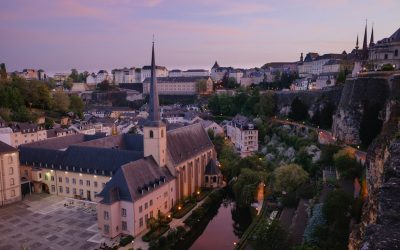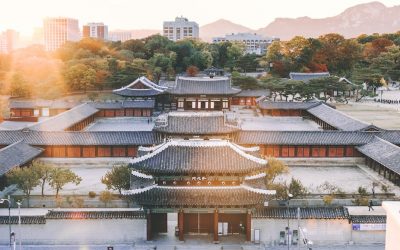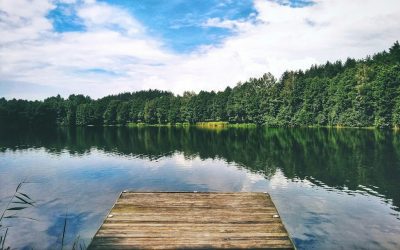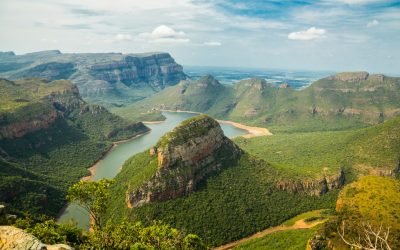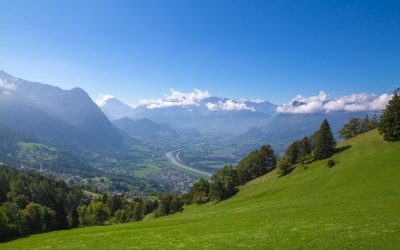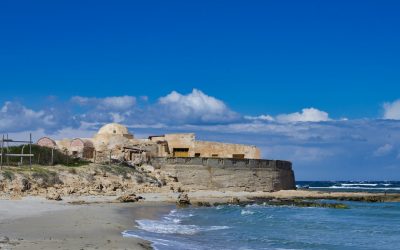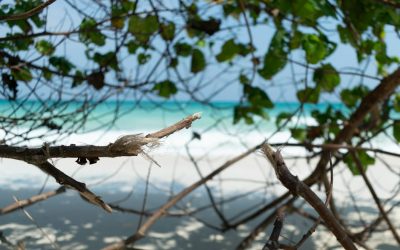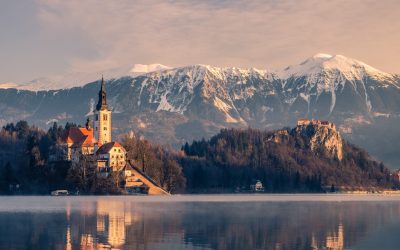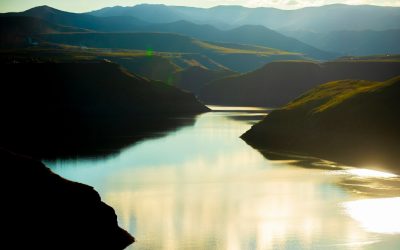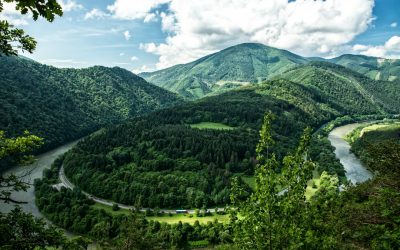World Geography
Geography is the study of the Earth’s landscapes, environments, and the relationships between people and their surroundings. It encompasses both the physical aspects of the Earth, such as its landforms, bodies of water, and climate, as well as the human aspects, including population distribution, cultures, and economies. World geography is a broad field that seeks to understand the complexities of our planet and how humans interact with it. By studying world geography, we can gain a deeper appreciation for the diversity of our planet and the interconnectedness of its various regions.
Geography is a multidisciplinary field that draws on elements of physical science, social science, and humanities. It involves the use of maps, spatial analysis, and geographic information systems (GIS) to understand the Earth’s surface and the processes that shape it. World geography also encompasses the study of human geography, which examines the ways in which people and their activities are distributed across the Earth. By understanding world geography, we can better appreciate the environmental, cultural, and economic challenges facing different regions of the world. This knowledge is crucial for addressing global issues such as climate change, resource management, and international development.
The Five Oceans and Seven Continents
The Earth’s surface is divided into five major oceans: the Pacific, Atlantic, Indian, Southern (or Antarctic), and Arctic Oceans. These vast bodies of water play a crucial role in regulating the Earth’s climate and supporting diverse marine ecosystems. The oceans also serve as important transportation routes and a source of food and other natural resources for human societies around the world.
In addition to the oceans, the Earth’s landmasses are divided into seven continents: Africa, Antarctica, Asia, Europe, North America, Australia (or Oceania), and South America. Each continent has its own unique physical and cultural characteristics, shaped by millions of years of geological processes and human history. From the deserts of Africa to the rainforests of South America, the continents offer a rich tapestry of landscapes and environments for exploration and study.
Major Mountain Ranges and Deserts
The Earth’s surface is also marked by major mountain ranges and deserts that have shaped the planet’s physical and cultural landscapes. The Himalayas, for example, are the highest mountain range in the world and are home to diverse ecosystems and cultures in countries such as India, Nepal, and Bhutan. The Andes in South America, the Rockies in North America, and the Alps in Europe are other prominent mountain ranges that have influenced human settlement patterns and economic activities.
Deserts cover about one-third of the Earth’s land surface and are characterized by low precipitation and extreme temperatures. The Sahara Desert in Africa is the largest hot desert in the world, while the Gobi Desert in Asia is one of the largest cold deserts. Deserts are not only home to unique flora and fauna but have also been important trade routes and cultural crossroads throughout history.
Climate Zones and Biomes
The Earth’s climate is influenced by a variety of factors, including latitude, altitude, ocean currents, and prevailing winds. As a result, the planet is divided into different climate zones, each with its own characteristic weather patterns and ecosystems. The equator, for example, experiences a tropical climate with high temperatures and heavy rainfall, while the polar regions have a cold and dry climate.
These climate zones give rise to different biomes, or large ecological areas characterized by distinct plant and animal communities. The tropical rainforest biome, found near the equator, is home to a diverse array of species and is vital for regulating the Earth’s climate. The grasslands biome, found in regions such as the African savannah and North American prairies, supports grazing animals and has been important for human agriculture throughout history.
Human Geography and Population Distribution
Human geography examines the ways in which people and their activities are distributed across the Earth’s surface. It encompasses topics such as population growth, migration patterns, urbanization, and cultural diversity. Understanding human geography is crucial for addressing global challenges such as poverty, inequality, and environmental degradation.
Population distribution is uneven across the world, with some regions experiencing rapid population growth while others are declining. The majority of the world’s population lives in Asia, particularly in countries such as China and India. Urban areas are also growing rapidly, with more than half of the world’s population now living in cities. This trend has significant implications for infrastructure development, resource management, and social inequality.
Historical and Cultural Geography
Historical geography examines how human activities have shaped the Earth’s landscapes over time. It explores topics such as colonialism, trade routes, and the rise and fall of empires. Cultural geography focuses on how human cultures have developed in different regions of the world and how they interact with their environments.
The Silk Road, for example, was an ancient trade route that connected China with Europe and facilitated the exchange of goods, ideas, and technologies across Eurasia. This historical trade route had a profound impact on the development of cultures and economies along its path. Similarly, cultural geographers study how different societies have adapted to their environments through practices such as agriculture, architecture, and religious beliefs.
The Importance of Geographic Knowledge
Geographic knowledge is crucial for addressing global challenges such as climate change, resource management, and international development. By understanding world geography, we can better appreciate the environmental, cultural, and economic challenges facing different regions of the world. This knowledge is crucial for addressing global issues such as climate change, resource management, and international development.
Geographic knowledge also helps us to understand our interconnectedness with other regions of the world. By studying world geography, we can gain a deeper appreciation for the diversity of our planet and the interconnectedness of its various regions. This understanding can foster a sense of global citizenship and empathy for people from different cultures and backgrounds.
In conclusion, world geography is a complex and multifaceted field that encompasses both physical and human aspects of the Earth’s landscapes. By studying world geography, we can gain a deeper appreciation for the diversity of our planet and the interconnectedness of its various regions. This knowledge is crucial for addressing global challenges such as climate change, resource management, and international development. It also helps us to understand our interconnectedness with other regions of the world and fosters a sense of global citizenship.
FAQs
What is world geography?
World geography is the study of the Earth’s landscapes, environments, and the relationships between people and their environments. It encompasses the physical features of the Earth, as well as the human activity that takes place on it.
Why is world geography important?
World geography is important because it helps us understand the world around us. It provides insights into the physical and human processes that shape our planet, and helps us make informed decisions about how to interact with our environment.
What are the main branches of world geography?
The main branches of world geography include physical geography, which focuses on the Earth’s natural features and processes, and human geography, which examines the relationships between people and their environments.
How does world geography impact our daily lives?
World geography impacts our daily lives in numerous ways, from influencing the weather and climate we experience, to shaping the availability of natural resources and influencing the distribution of populations and cultures around the world.
What are some key concepts in world geography?
Key concepts in world geography include location, place, human-environment interaction, movement, and region. These concepts help geographers understand and interpret the world around them.
Discovering the Charm of Luxembourg: A Journey Through the Heart of Europe
Nestled in the heart of Europe, Luxembourg is a small but captivating country that often gets overlooked by travelers. With its rich history, stunning landscapes, and vibrant culture, Luxembourg is truly a hidden gem waiting to be discovered. Despite its small size, Luxembourg has a lot to offer visitors, from its charming capital city to its picturesque countryside. Whether you’re interested in exploring historical landmarks, indulging in delicious cuisine, or simply immersing yourself in the beauty of nature, Luxembourg has something for everyone. Luxembourg is located between Belgium, France, and Germany, making it a melting pot of cultures and influences. The country has a fascinating history that dates back to Roman times and has been shaped by various rulers and empires throughout the centuries. Today, Luxembourg is known for its political stability, high standard of living, and thriving economy. It is also home to several European Union institutions and has a strong presence in the banking and finance sectors. Summary Luxembourg is a hidden gem in Europe with a rich history, natural beauty, and culinary delights. Luxembourg City offers a unique blend of old and new architecture to explore. The country’s castles, fortresses, and museums provide a glimpse into its fascinating past. Hiking trails and scenic views make Luxembourg a nature lover’s paradise. From traditional dishes to Michelin-starred restaurants, Luxembourg’s culinary scene is not to be missed. Exploring Luxembourg City: A Blend of Old and New Luxembourg City, the capital of the country, is a perfect blend of old-world charm and modern sophistication. The city’s unique architecture reflects its rich history and diverse cultural influences. From medieval fortifications to...
Discovering the Rich Culture and Cuisine of South Korea: A Journey Through the Land of the Morning Calm
South Korea, officially known as the Republic of Korea, is a vibrant and dynamic country located in East Asia. It is known for its rich history, vibrant culture, delicious cuisine, and stunning natural beauty. South Korea is often referred to as the “Land of the Morning Calm” due to its serene and peaceful atmosphere. The name “Land of the Morning Calm” originated from the Joseon Dynasty, which ruled Korea from 1392 to 1897. During this time, Korea was often referred to as “Chosun,” which means “morning calm” in Korean. The name was given to reflect the country’s peaceful and tranquil nature. Today, South Korea is a thriving and modern nation that has made significant advancements in technology, entertainment, and economy. It is home to bustling cities like Seoul and Busan, as well as beautiful natural landscapes such as national parks, mountains, and beaches. Whether you are interested in exploring ancient palaces, indulging in delicious street food, or experiencing the excitement of K-pop music, South Korea has something for everyone. Summary South Korea is known as the Land of the Morning Calm. South Korea has a rich history that dates back to ancient times. South Korea’s culture is vibrant and includes art, music, and dance. South Korean cuisine ranges from street food to fine dining. South Korea has many festivals and celebrations that showcase its colourful traditions. A Brief History of South Korea: From Ancient Times to Modern Day South Korea has a long and fascinating history that dates back thousands of years. The earliest known civilization in the Korean Peninsula can be traced back to the Neolithic period around...
Discovering Lithuania: A Journey Through the Heart of the Baltics
Lithuania, located in the Baltic region of Europe, is a country with a rich history, vibrant culture, and stunning natural beauty. Despite being a relatively small country, Lithuania offers a unique and worthwhile travel experience that should not be missed. From its medieval grand duchy to its struggle for independence in the 20th century, Lithuania has a fascinating history that is reflected in its historical landmarks and museums. Additionally, the capital city of Vilnius boasts a charming Old Town filled with architectural wonders, while also offering a modern and vibrant culture. With attractions such as Trakai Castle, the Hill of Crosses, and the Curonian Spit, Lithuania has something to offer every type of traveler. Whether you are interested in history, nature, or simply experiencing a new culture, Lithuania should definitely be on your travel bucket list. Summary Lithuania is a must-visit destination for travellers looking for a unique and authentic experience. The country has a rich history, from medieval times to independence, which can be explored through its cities and landmarks. Vilnius, the capital city, offers a mix of old town charm and modern culture. Trakai Castle on the lake and the Hill of Crosses are two must-see landmarks that showcase Lithuanian resilience and faith. Lithuania’s natural beauty can be experienced through outdoor adventures such as hiking, cycling, and kayaking. The History of Lithuania: From Medieval Times to Independence Lithuania has a long and storied history that dates back to medieval times. In the 14th century, Lithuania was one of the largest and most powerful countries in Europe, known as the Grand Duchy of Lithuania. It was during this...
Exploring the Vibrant Culture and Scenic Beauty of South Africa: A Journey Through the Rainbow Nation
South Africa, known as the Rainbow Nation, is a country located at the southernmost tip of the African continent. It is a land of rich history and diverse cultures, with a population that is made up of various ethnic groups and languages. The nickname “Rainbow Nation” was coined by Archbishop Desmond Tutu to describe the country’s multiculturalism and diversity. South Africa has a complex history, marked by colonization, apartheid, and the struggle for freedom and equality. The country has overcome many challenges and has emerged as a vibrant and diverse nation. Today, South Africa is known for its natural beauty, wildlife, vibrant cities, and rich cultural heritage. Summary South Africa is known as the Rainbow Nation due to its diverse population and cultures. South Africa has a rich cultural heritage, including traditional music, dance, and art. The landscapes of South Africa are breathtaking, from the beaches of the coast to the mountains and deserts inland. A safari adventure in South Africa offers the chance to see the Big Five and other wildlife up close. Cape Town, Johannesburg, and Durban are vibrant cities with their own unique attractions and cultures. Discovering the Rich Cultural Heritage of South Africa South Africa is home to a wide range of cultures and traditions, each with its own unique customs and practices. From the Zulu people in the east to the Xhosa people in the south, there are countless opportunities to immerse yourself in the local culture. One way to experience South Africa’s cultural heritage is by visiting a Zulu village. Here, you can learn about their traditional way of life, witness traditional ceremonies,...
Discovering the Hidden Gems of Liechtenstein: A Journey Through Europe’s Smallest Country
Nestled between Switzerland and Austria, Liechtenstein is a small but captivating country that often goes unnoticed by travelers. With a population of just over 38,000 people, Liechtenstein is one of the smallest countries in the world, but it is also one of the most charming. Despite its size, Liechtenstein offers a wealth of natural beauty, rich cultural heritage, and a range of activities and experiences that make it a hidden gem in Europe. Summary Liechtenstein is a hidden gem in Europe, often overlooked by tourists. The country boasts stunning natural beauty, with opportunities for hiking and skiing. Liechtenstein’s rich cultural heritage is on display in its museums and art galleries. The historic towns and villages of Liechtenstein are charming and picturesque. Foodies will love the local cuisine and wine tasting experiences in Liechtenstein. The Natural Beauty of Liechtenstein: Exploring the Great Outdoors Liechtenstein is blessed with stunning landscapes that are sure to take your breath away. From the majestic peaks of the Alps to the picturesque valleys and crystal-clear lakes, there is no shortage of natural beauty to explore. Hiking is a popular activity in Liechtenstein, with numerous trails that cater to all levels of fitness and experience. Whether you’re a seasoned hiker or just looking for a leisurely stroll, you’ll find plenty of options to suit your needs. Cycling is another great way to experience the natural beauty of Liechtenstein. The country boasts a well-developed network of cycling paths that wind through its scenic countryside. You can rent a bike and explore at your own pace, taking in the stunning views as you pedal along. In the winter...
Exploring the Rich Culture and History of Somalia: A Journey Through the Horn of Africa
Somalia, located in the Horn of Africa, is a country with a rich and diverse culture that is often overlooked. It is a land of ancient history, vibrant traditions, and resilient people. Learning about Somalia and its culture is important as it allows us to broaden our understanding of the world and appreciate the beauty and uniqueness of different societies. Summary Somalia has a rich history and culture that is often overlooked in the media. The country has a complex political landscape, with various factions vying for power. Somalia has a long history of trade and commerce, dating back to ancient times. Islam has had a profound impact on Somali culture and society, shaping everything from daily life to politics. Somali women have played a crucial role in society and politics, despite facing significant challenges and discrimination. The Geographical and Political Landscape of Somalia Somalia is blessed with a diverse geography that includes stunning coastlines, arid deserts, fertile plains, and rugged mountains. The country experiences a tropical monsoon climate, with two distinct seasons – the dry season and the rainy season. This geographical diversity has shaped the culture and way of life of the Somali people. Politically, Somalia has faced numerous challenges throughout its history. It gained independence from Italy and Britain in 1960 but has since experienced periods of political instability and civil war. Currently, Somalia operates under a federal parliamentary republic system, with a president as the head of state and a prime minister as the head of government. The Ancient and Medieval History of Somalia Somalia has a rich ancient and medieval history that dates back...
Exploring the Rich History and Culture of Libya: A Journey Through the Land of the Berbers
Located in North Africa, Libya is a country known for its diverse landscapes, rich history, and vibrant culture. It is bordered by the Mediterranean Sea to the north, Egypt to the east, Sudan to the southeast, Chad and Niger to the south, and Algeria and Tunisia to the west. With a population of over 6 million people, Libya is home to a mix of ethnic groups, including Arabs, Berbers, Tuaregs, and other minority groups. Libya’s history and culture are of great importance not only to its own people but also to the world. The country has been inhabited since prehistoric times and has been influenced by various civilizations throughout its history. From the indigenous Berber people to the ancient Phoenicians, Greeks, and Romans, as well as Islamic influences and more recent colonial rule, Libya’s heritage is a testament to its rich past. Summary Libya is a diverse country with a rich heritage. The Berbers are the indigenous people of Libya. Libya has a history of ancient civilizations, including the Phoenicians, Greeks, and Romans. Libya has a strong Islamic heritage, with many mosques, madrasas, and tombs. Libya has experienced colonial rule under Italy and Britain, as well as a revolution and civil war. The Berbers: The Indigenous People of Libya The Berbers are the indigenous people of Libya and have inhabited the region for thousands of years. They have their own distinct culture, language, and traditions that have greatly influenced Libyan society. The Berber language, known as Tamazight, is still spoken by a significant portion of the population. The Berbers have a rich oral tradition that includes storytelling, poetry, and...
Discovering the Hidden Gems of the Solomon Islands: A Journey Through the Pacific’s Pristine Paradise
The Solomon Islands, located in the South Pacific, is a hidden gem that should be on every traveler’s bucket list. With its pristine beaches, lush rainforests, and vibrant culture, this archipelago offers a unique and enchanting experience for those seeking an off-the-beaten-path adventure. The Solomon Islands is made up of over 900 islands, each with its own distinct beauty and charm. From the main island of Guadalcanal, where you can explore historical sites from World War II, to the remote and untouched islands of the Western Province, there is something for everyone in this tropical paradise. Summary The Solomon Islands offer an enchanting destination with a rich history and culture. The islands are home to a diverse range of natural wonders, including unique biodiversity and world-class diving and snorkelling opportunities. Visitors can escape to idyllic beaches and islands for the perfect getaway, or embark on adventure activities such as hiking and kayaking. Savour the local cuisine and celebrate the islands’ rich heritage at festivals and events. Sustainable tourism practices support local communities and the environment, making for a memorable and responsible trip. History and Culture: A Glimpse into the Past The Solomon Islands has a rich cultural heritage that dates back thousands of years. The indigenous people of the islands have a deep connection to their land and traditions, which are still observed today. Visitors to the Solomon Islands can immerse themselves in the local culture by visiting traditional villages and witnessing traditional ceremonies and dances. One of the most significant historical sites in the Solomon Islands is Honiara, the capital city located on Guadalcanal. Here, you can visit...
Exploring the Rich Culture and History of Liberia: A Journey to West Africa
Liberia, located on the west coast of Africa, is a country with a rich history and vibrant culture. It is bordered by Sierra Leone to the northwest, Guinea to the north, and Ivory Coast to the east. With a population of over 4 million people, Liberia is known for its diverse ethnic groups, including the Kpelle, Bassa, and Gio. Liberia’s history is unique among African nations. It was founded in the early 19th century by freed American slaves who returned to Africa. These settlers established a colony and named it Liberia, which means “land of the free” in Latin. The country gained independence in 1847 and has since experienced periods of political instability and civil war. However, Liberia has made significant progress in recent years towards peace and development. Liberia is a unique destination for travelers due to its blend of African and American influences. The country’s history as a settlement for freed slaves has resulted in a culture that combines elements of both African and American traditions. This fusion can be seen in Liberia’s music, dance, cuisine, and art. Additionally, Liberia’s natural beauty, with its stunning landscapes and diverse wildlife, makes it an ideal destination for nature lovers. Summary Liberia is a unique West African nation with a rich history and culture. From colonization to independence, Liberia’s history is complex and fascinating. Liberia’s culture is a blend of African and American influences, creating a unique identity. Traditional music and dance in Liberia are a celebration of life and community. Liberia’s art and craft reflect the nation’s heritage and are a testament to its creativity. The History of Liberia:...
Discovering the Hidden Gems of Slovenia: A Journey Through the Picturesque Landscapes and Rich Culture
Slovenia may be a small country, but it is packed with hidden gems waiting to be discovered. Nestled between Italy, Austria, Hungary, and Croatia, Slovenia offers a diverse range of landscapes, from majestic mountains to crystal-clear lakes and lush forests. While popular destinations like Lake Bled and Ljubljana are well-known, there are many lesser-known attractions and experiences that showcase the true beauty and culture of this hidden gem. Summary Slovenia is a hidden gem with natural wonders, rich history and culture, charming towns and villages, delicious cuisine and wine, artistic and creative side, thriving outdoor activities, and friendly locals. Exploring Slovenia’s natural wonders includes visiting the stunning Lake Bled, the underground Postojna Cave, and the Triglav National Park. Delving into Slovenia’s rich history and culture involves exploring the medieval Ljubljana Castle, the Lipica Stud Farm, and the Skocjan Caves. Discovering Slovenia’s charming towns and villages includes visiting the coastal town of Piran, the picturesque village of Bled, and the historic town of Ptuj. Sampling Slovenia’s delicious cuisine and wine involves trying traditional dishes like potica and jota, and tasting local wines like Rebula and Teran. Exploring Slovenia’s Natural Wonders Slovenia is a nature lover’s paradise, with its stunning landscapes and outdoor activities. The country is home to the Julian Alps, which offer excellent hiking and skiing opportunities. Triglav National Park is a must-visit for outdoor enthusiasts, with its rugged peaks, glacial lakes, and picturesque valleys. The park is also home to Mount Triglav, the highest peak in Slovenia. For water sports enthusiasts, Lake Bled is a popular destination. With its emerald-green waters and a medieval castle perched on a...
Exploring the Enchanting Land of Lesotho: A Journey Through the Mountain Kingdom
Lesotho, also known as the Kingdom in the Sky, is a small landlocked country located in southern Africa. It is completely surrounded by South Africa and is known for its stunning landscapes, rich culture, and warm hospitality. Lesotho has a fascinating history, having been established as a kingdom in the 19th century and maintaining its independence throughout colonial rule. The country is home to the Basotho people, who have a unique culture and traditions that are still celebrated today. Lesotho is a truly unique travel destination for several reasons. Firstly, its geographical location makes it a haven for outdoor enthusiasts. The country is dominated by mountains, with the Maloti-Drakensberg range running through its eastern border. This makes Lesotho a paradise for hikers, with numerous trails and breathtaking views to explore. Additionally, Lesotho’s rich cultural heritage sets it apart from other destinations in the region. The Basotho people have a strong sense of identity and pride in their traditions, which can be seen in their clothing, music, dance, and art. Summary Lesotho is a small, landlocked country in southern Africa known as the Kingdom in the Sky. The natural wonders of Lesotho include stunning mountains, rivers, and valleys that offer breathtaking views and outdoor activities. The unique culture of Lesotho is rich in traditions and customs, including the famous Basotho blanket and hat. The best places to visit in Lesotho range from historical sites like Thaba-Bosiu to natural reserves like the Sehlabathebe National Park. Trekking in Lesotho is a hiker’s paradise, with trails that lead through the mountains and valleys to remote villages and stunning vistas. The Natural Wonders of...
Discovering Slovakia: An Unforgettable Journey Through the Heart of Europe
Nestled in the heart of Europe, Slovakia is a land of hidden gems waiting to be discovered. With its rich history, diverse culture, and stunning natural landscapes, this small country offers a unique and off-the-beaten-path experience for travelers. Located in Central Europe, Slovakia shares borders with Poland, Ukraine, Hungary, Austria, and the Czech Republic. Its strategic location has influenced its history and culture, resulting in a fascinating blend of influences from neighboring countries. Slovakia has a long and complex history, with evidence of human habitation dating back to the Paleolithic era. Throughout the centuries, the region has been ruled by various empires, including the Celts, Romans, and Habsburgs. In the 20th century, Slovakia was part of Czechoslovakia until it gained independence in 1993. This rich history is reflected in the country’s architecture, traditions, and cultural heritage. For travelers looking for something off the beaten path, Slovakia is the perfect destination. While neighboring countries like Austria and the Czech Republic attract hordes of tourists, Slovakia remains relatively undiscovered. This means that visitors can experience authentic Slovak culture and explore untouched natural landscapes without the crowds. Whether you’re interested in history, outdoor adventures, or simply immersing yourself in a new culture, Slovakia has something to offer. Summary Slovakia is a land of hidden gems, with rich cultural heritage and natural wonders waiting to be discovered. Visitors can explore castles, learn about folk traditions, and enjoy outdoor adventures like hiking and skiing. The cities of Bratislava and Kosice offer vibrant urban experiences, while the countryside is perfect for relaxation and exploration. Foodies will love Slovakian cuisine, which features hearty stews, dumplings, and...
